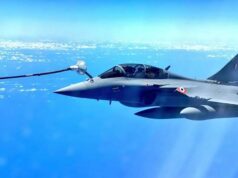For more Enhanced Coastal Security Indian Navy Needs To Raise HQ CSS AT Command Level

It has been over a decade since Pakistani trained and supported Lashkar-e-Taiba (LeT) terrorists, launched by Pakistan, perpetrated terror attacks on Mumbai. Over 166 Indian and foreign citizens were killed and 300 injured in the massacre.
In 1993 explosives had been landed on Maharashtra Coast by the sea route; the 2008 attack, saw terrorists using a hijacked a Gujarat-based fishing vessel — Kuber — to make their way ashore to Mumbai.
To enhance security after the attack, multiple initiatives were set forth, including the National Committee for Coastal and Maritime Security (NCSMCS) in 2009, Steering Committee for Review of Coastal Security (SCRCS) in 2013, and the State and District level Coastal Security Committees in 2016.
The foremost step towards synergy was creation of Joint Operations Centres (JOC) at Mumbai, Cochin, Visakhapatnam and Port Blair. Each of these JOCs synergies coastal security efforts of over 15 central and coastal state government agencies.
The raising of Sagar Prahari Bal (SPB), comprising over 1,000 personnel, with the addition of over 100 Fast Interceptor Craft (FICs) has enhanced security of most major harbours. Installation of the Harbour Defence Surveillance System, which fuses various sensors has also been a technological leap to provide comprehensive real-time situational awareness for monitoring and analysis.
The induction of Intermediate Support Vessels (ISVs) specifically to ensure security of oil platforms off the eastern and western seaboards has also greatly enhanced our energy security.
Now there is a need to have a dedicated Coastal Security Flottila comprising OPVs, Missile Boats and Patrol Boats with each Naval Command. Then there is requirement of an Air Flottila with each command comprising helicopters and Short Range Maritime Surveillance aircraft. Finally a chain of composite Coastal Missile Batteries ( BRAHMOS, AKASH and SRQR ) linked to 500km range Coastal radars. All these assets will be controlled by HQ Coastal Security and Surveillance headed by a Vice Admiral. The JOC at Command level will be operated by this HQ and will have Jock at each Naval Area too.
The Indian Navy is the principal maritime agency of the nation, and, undertakes close coordination with the Coast Guard and other organisations involved in coastal security operations. The Marine Police are also being empowered by coastal states and one of the key challenges was to orient and train these police personnel, who are under respective coastal state governments, to the marine environment.
“The National Academy of Coastal Policing, which is being developed near Okha in Gujarat, will be a unique institution to train Marine police in maritime laws, seamanship, boat-work, navigation, weapon-handling, usage of navigation and surveillance instruments etc,” the officer said.
The government has also facilitated strengthening of legislative framework for overall maritime security such as the Anti-Maritime Piracy Bill, the Marine Fisheries (Regulation and Management) Bill and the Merchant Shipping Bill. These bills need to be promulgated at the earliest.
Coastal security has been enhance by Maritime Domain Awareness (MDA), which is extremely challenging since India is located in one of the busiest maritime traffic regions of the world. To complicate the picture, India also has perhaps the highest density of fishing vessels in its territorial waters for a country of its size. “The setting-up of National Command Control Communication and Intelligence (NC3I) Network, which facilitates interlinking of naval and coast guard stations and development of a common operational plot, has visibly enhanced our overall MDA.
The Information Management and Analysis Centre (IMAC) and associated Information Fusion Centre (IFC) at Gurugram- is the nerve-centre of the NC3I network, receives information from various sources and fuses them into a common operational picture.
To evaluate effectiveness of these efforts towards the nation’s coastal security, pan-India coastal security exercise Sea Vigil, was first conducted in January 2019. This large-scale exercise witnessed participation of more than 70 ships, 700 craft and 35 aircraft of the Indian Navy, Coast Guard, State Marine Police, Central Armed Police Forces (CAPFs) and other agencies, across all coastal States and Union Territories, a unique event in terms of its scale, even perhaps at the global level.
The Indian Navy, in close partnership with all other stakeholders, continues to establish an electronic net and seamless surveillance mechanism along the nation’s coastline, in its ongoing quest to develop a hardy maritime security architecture.



